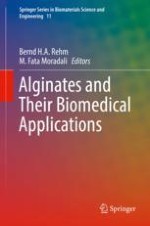2018 | OriginalPaper | Chapter
7. Alginate Application for Heart and Cardiovascular Diseases
Authors : Zhengfan Xu, Mai T. Lam
Published in: Alginates and Their Biomedical Applications
Publisher: Springer Singapore
Activate our intelligent search to find suitable subject content or patents.
Select sections of text to find matching patents with Artificial Intelligence. powered by
Select sections of text to find additional relevant content using AI-assisted search. powered by
